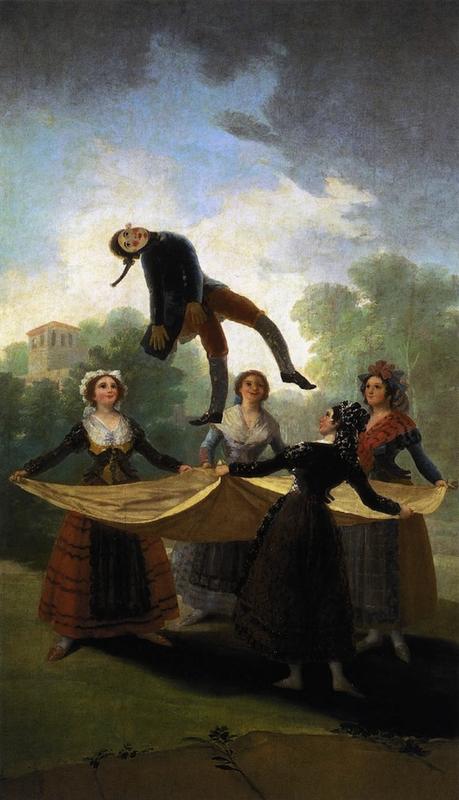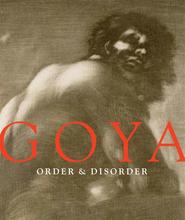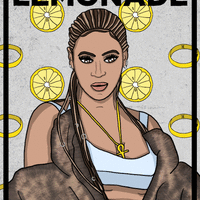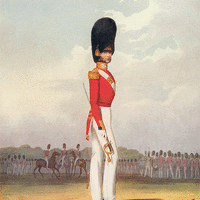More about The Straw Manikin
- All
- Info
- Shop

Contributor
Don’t be fooled, The Straw Manikin is a work of Francisco Goya.
It's from his more romantic days long before he started to really paint some ugly Royals and long before he went a little loony and started to paint his walls to look more like nightmares than paintings.
These tapestries had to be nearly ripped from Goya’s imagination. It was to be his first contribution to Charles IV as the new court painter, but he had no desire for these happy peasant scenes. When your hearts not in it why even try? Those people look as lifelike as a pile of rocks. Alas, the life of a starving artist isn't actually that great and they need to make a living too!
The Straw Manikin portrays a scene that appeared many times at carnivals and festivals. A group of women would toss a straw man into the air singing a myriad of songs. This could be interpreted a few ways, but our favorite interpretation is the one with the sexual connotation. No matter how much power a man thinks he has, he is being controlled by a woman – now if only the straw man had a brain.
Though we might not find it up to par with Goya’s normal work it did not stop Spanish composer Enrique Granados in finding inspiration. He used many of Goya’s works to help compose his music. In 1915, he composed an opera aptly named Goyescas. It was first performed at the Metropolitan Opera in New York and was the first Spanish opera performed there. The first Tableaux opens with a group of woman playing with the straw manikin.
Granados supposedly said “I am enamored with the psychology of Goya, with his palette, with him, with his muse the Duchess of Alba, with his quarrels with his models, his loves and flatteries. That whitish pink of the cheeks, contrasting with the blend of black velvet; those subterranean creatures, hands of mother-of-pearl and jasmine resting on jet trinkets, have possessed me.” What a weirdo! I’m not sure who’s crazier … composers or artists.
But if you are watching Goya’s Ghosts anytime soon, listen closely to that song the kids are singing in the amazing closing scene.
El pobre pelele se quiere morir – Translation – The poor puppet wants to die.
And our best attempt at the rest of the song:
El pelele està malo ¿qué le daremos? The puppet is bad. What do we give?
Una zurra de palos ¡que le matemos! A spanking club, we will kill him!
(Agua de caracoles, se pondrá bueno. Water snails will be good)
El pobre pelele, (pelen pelela / el empelelao), The poor puppet
Se tienta lo suyo, lo tiene arrugao, They are tempted, it have wrinkles
Le da con el dedo, lo quiere bullir, It gives you a finger, it wants to budge
El pobre pelele se quiere morir. The poor puppet wants to die.















